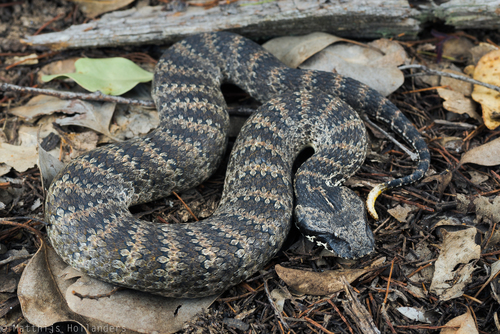
Common Death Adder
The Death Adder is a master of disguise, blending seamlessly into its environment. With its quick strike and tail mimicry, it lures unsuspecting prey. Despite its name, it plays a crucial role in controlling rodent populations, making it an essential part of the Australian ecosystem.
15 years
Lifespan
Brown, Red, Black
Color
Least Concern
Conservation Status
Decreasing
Population Trend
Characteristics
Acanthophis antarcticus, commonly known as the Death Adder, is a highly venomous snake native to Australia. It is characterized by a thick, short body, triangular head, and a distinctive, rapid strike. This ambush predator features a unique tail tip used to lure prey. Its habitat includes woodlands, grasslands, and forests.
Distribution Range of the Common Death Adder
Acanthophis antarcticus, commonly known as the common death adder, is native to Australia. It is predominantly found in the eastern and southern regions of the continent, including the states of New South Wales, Queensland, South Australia, Victoria, and parts of the Northern Territory. Additionally, it can be found in Papua New Guinea and surrounding islands.
Common Death Adder's Habitat
Environmental Conditions
The common death adder typically inhabits a variety of environments ranging from woodlands, forests, grasslands, and heathlands to coastal regions. It prefers areas with ample ground cover such as leaf litter, logs, and rocks, which provide camouflage and protection. The climate in its habitat is often temperate to subtropical, with varying humidity and rainfall depending on the specific region.
Ecological Niche
Acanthophis antarcticus is a terrestrial ambush predator, primarily preying on small mammals, birds, frogs, and reptiles. It is highly adapted to a sit-and-wait strategy, using its cryptic coloration and a distinctive tail tip to lure prey within striking distance. Its ecological niche involves controlling the populations of its prey species, contributing to the balance of the ecosystem in its native range.
Copyright @ Nature Style Limited. All Rights Reserved.
 English
English